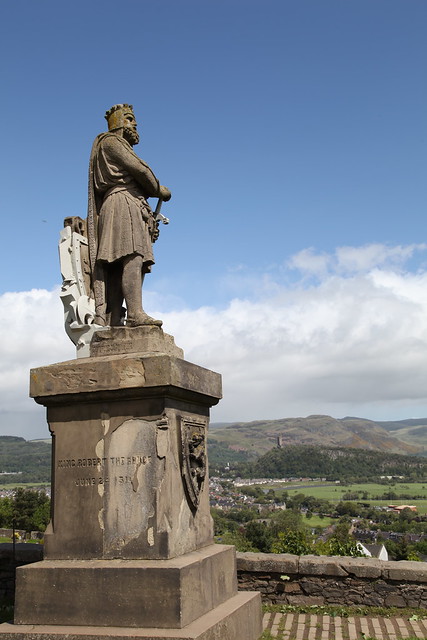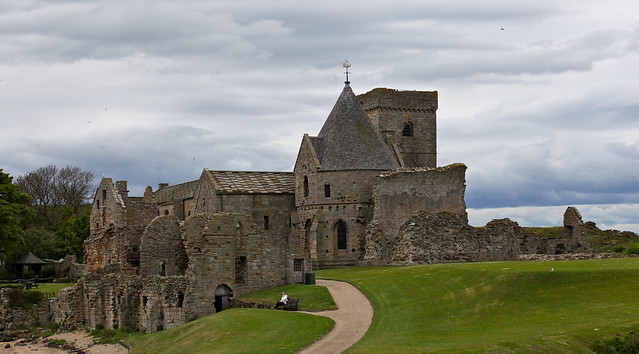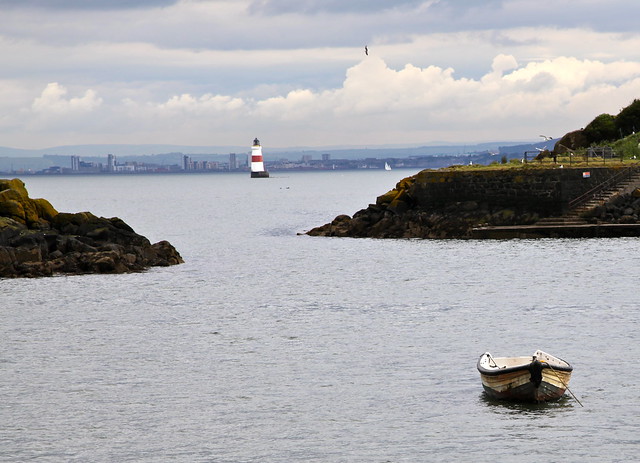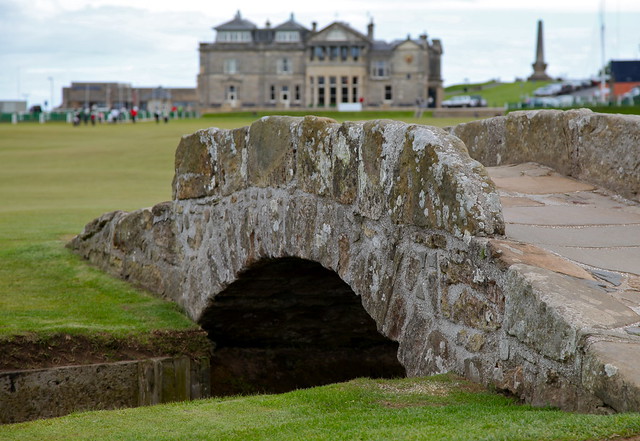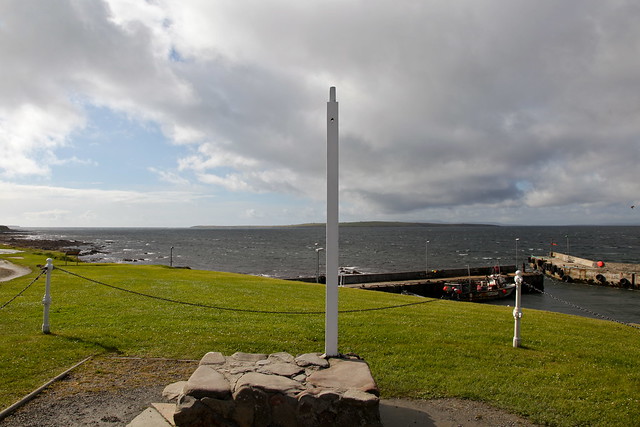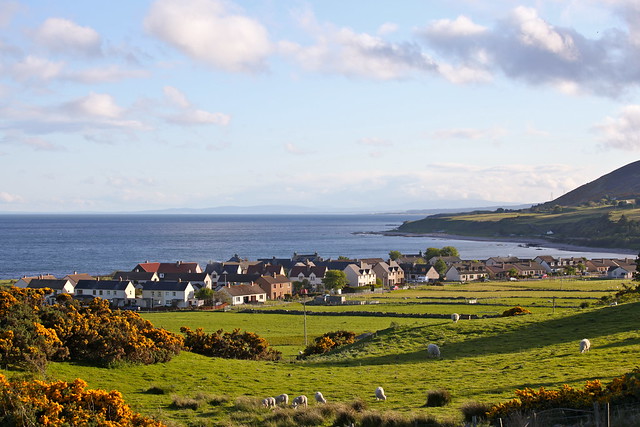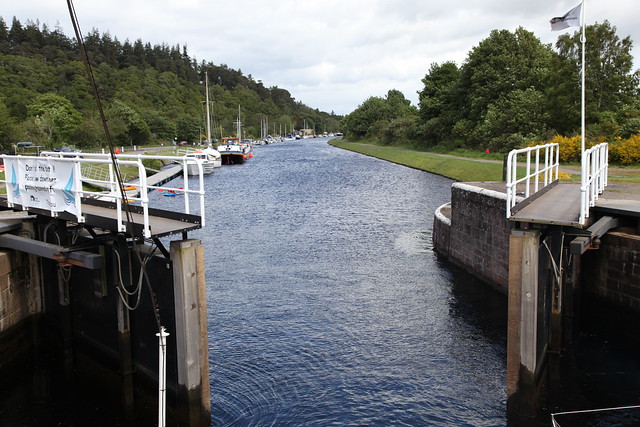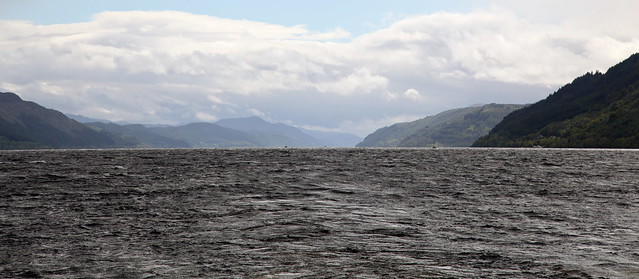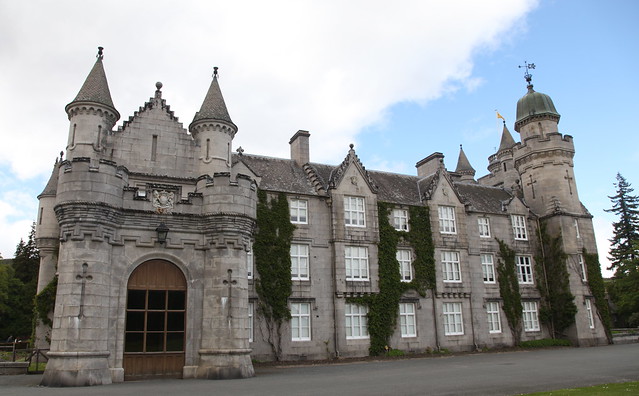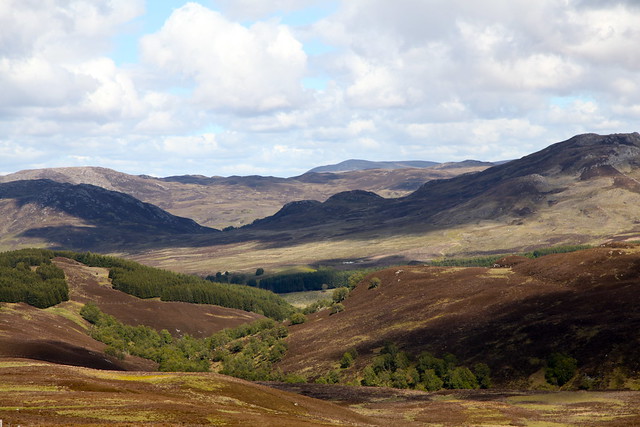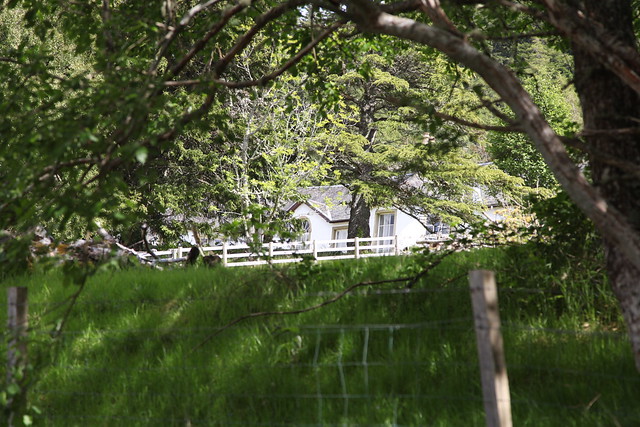One of the first things I did was take a ride on the Hogwarts Express.
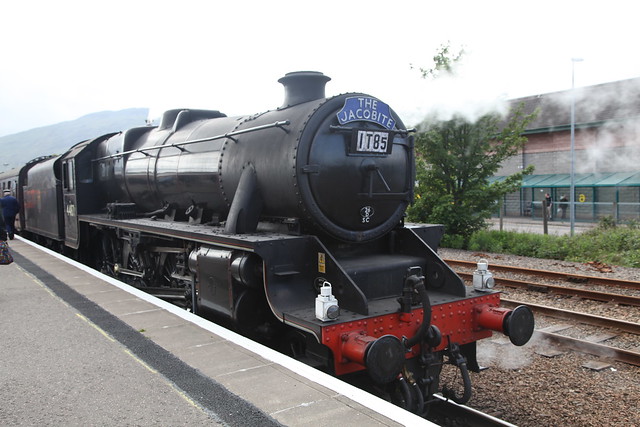
The Jacobite steam train (which is the Hogwarts Express) runs from Fort William to Mallaig, on the east coast. From Mallaig you can take the ferry to Skye. The train journey takes you past some wonderful scenery as it trundles along the coast, through the mountains, alongside lochs. Unfortunately the windows don't open so photos have to be taken through glass.
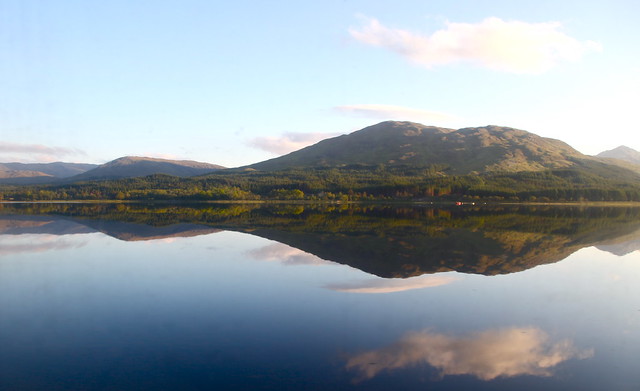
It also crosses the Glenfinnan Viaduct which fans of the Harry Potter films should recognise.
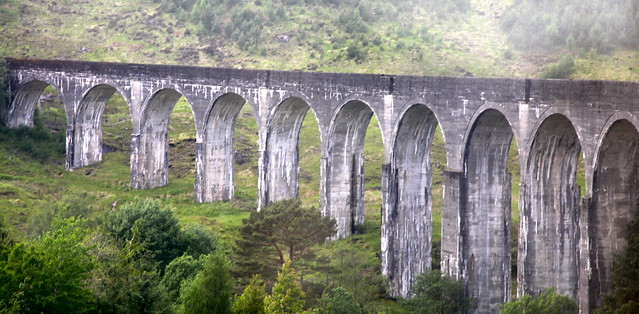
The viaduct was built at the end of the 1800s: opened 1901 I think. It's made of unreinforced concrete and has 21 arches. It looks impressive as it marches across the valley.
Mallaig is a pretty little harbour town. You get about an hour to wander around before the train returns to Fort William. I watched some fishermen unloading their boat - boxes and boxes of ice-packed goodies.
Just on that, Scotland has great seafood. The salmon is the best I've had anywhere and the shellfish are huge and plentiful. Not cheap though.
Glenfinnan is an interesting place. It's where Bonnie Prince Charlie first landed in 1745 in his failed attempt to restore the Jacobite monarchy.

As well as the viaduct, there's an impressive monument to the Highlanders who helped him. The village is tiny but it gets a lot of visitors. It's in a lovely place too, right on the edge of Loch Sheil.
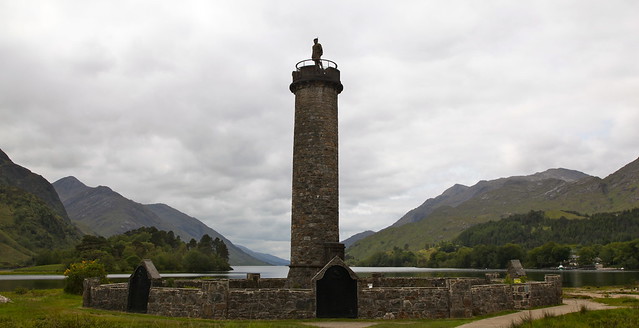
I decided I'd better do the trip across to Skye. There are two ways to get there: the ferry from Mallaig and the road bridge from Kyle of Lochalsh. I chose to take the ferry as it's closer to where I was staying. I think if you really want to see Skye you need to be prepared to shell out big bucks for a hotel and actually stay on the island. The ferry lands at the south end of Skye and I had about 6 hours before it sailed back to the mainland. That gave me just enough time to drive to Portree, the island's main town, have something to eat and drive back to the ferry. Consequently, I didn't see any of the northern half of the island where all the really spectacular scenery is. Still, I did see some very pretty coastline areas.
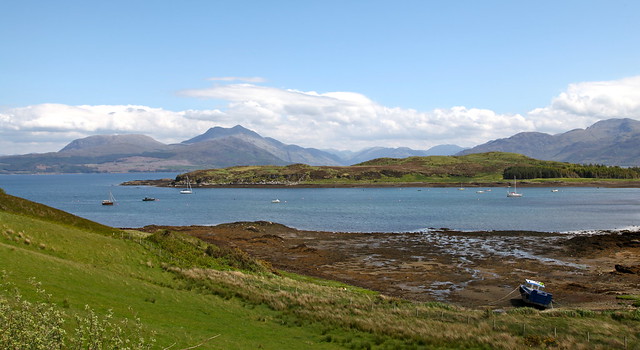
And lots of sheep.

I decided to try the drive to Kyle of Lochalsh and maybe take the bridge across the Skye and see some more of the island. Haha, eight hours later and I made it as far as Dornie (maybe 20 or so miles from Kyle) before I turned back. It's a spectacular drive through the Highlands though. It took me that long because I kept stopping to take in the views.

At Dornie is the castle of Eilean Donan.
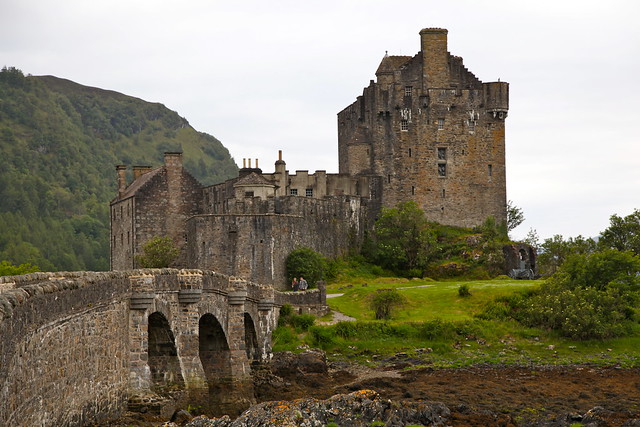
I think this castle features on every second postcard you see in Scotland. Sadly the tide was out so I couldn't get the classic "castle reflected in the water" shot. It was closed by the time I got there but the gates where still open so I was able to wander around the outside. When the tide's in the castle is cut off from the mainland and is accessible only via a stone footbridge. The bridge is a later construction as the original one was destroyed. The castle itself dates back to the 13th century and was originally built as a defence against Viking raiders. It then became a clan stronghold (Clan Macrae I think) and has been subjected to many attacks as a result. It's been much restored over the years. One of its claims to fame is the left-handed spiral staircase: which I didn't see as it was closed. Just about every other spiral staircase anywhere is right-handed to leave the sword arm free for swinging.
After the Highlands I wandered down to the Loch Lomond area. This is the biggest, by surface area, body of fresh water in the UK. I stayed about 20 minutes outside of Glasgow and wandered in to check it out. It's just a city, nothing special. However, it wasn't as dark, gloomy and dangerous as I was expecting. I heard a story about how fanatical the people are about their football teams that's worth sharing I think. Glasgow is dominated by 2 teams: Rangers (who play in blue) and Celtic (green). There's also an UK supermarket chain, Asda, which also has a green livery. Apparently Asda wanted to open a store in a rabid Rangers area. No go unless the store changed its colour. I don't know what the end result was but it just goes to show how fanatical people can be about their football.
Also, the Glaswegian accent is practically indecipherable.
I took a cruise on Loch Lomond. It's very pretty but, after the Highland lochs, was somehow a bit too manicured and 'safe'. The weather, surprise surprise, was atrocious. It started off sunny, then we were subjected to heavy rain and hail. Thunder and lightning too. Then sunshine again. Nevertheless it was a pleasant way to spend an afternoon watching the loch slide by.
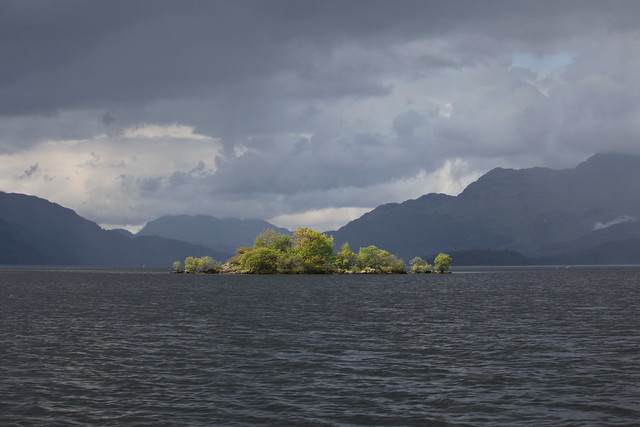
There are numerous stately homes along the loch shores: most are now luxury hotels or golf clubs.

This one is Rossdhu House, formerly the seat of Clan Colquhoun; now the Loch Lomond Golf Club.
Then I drove back to Liverpool.
Scotland is a fascinating place. It's not somewhere you'd go for the weather though, unless you like clouds, rain, wind and chill. I saw lots of walkers and touring cyclists, especially in the Highlands. It might be healthy and make them feel very self-righteous, but it can't be fun being constantly cold and wet.
The food is excellent, especially if you like seafood. I had a seafood platter in a restaurant in Kinlochleven (near Fort William) that had to be seen to be believed: half a lobster, half a crab, 6 huge langoustines (like big prawns or even yabbies) and dozens (literally dozens) of mussels and clams. I couldn't finish it by a long shot. I tried haggis but only managed a couple of mouthfuls. The taste was okay but the texture, and the thought of what was in it, defeated me.
If you're going to Scotland you must get to the Highlands. Magnificent scenery everywhere you look.

Later....
